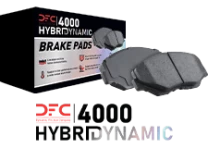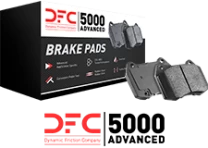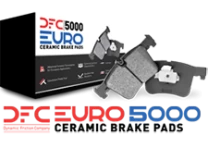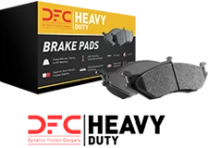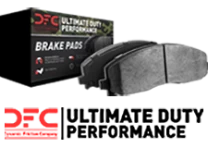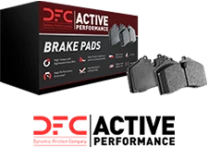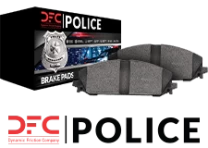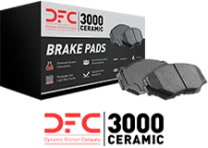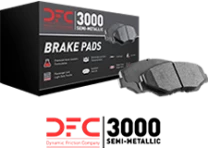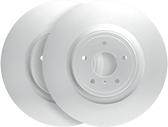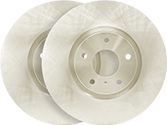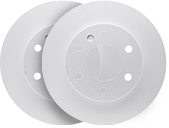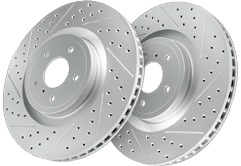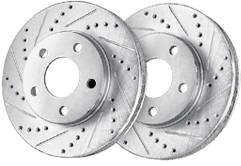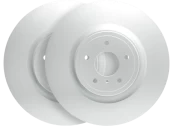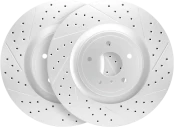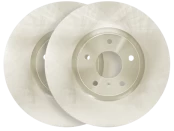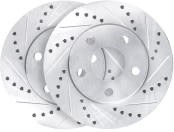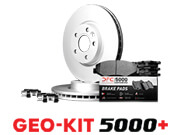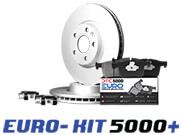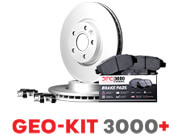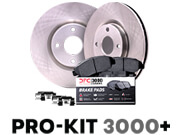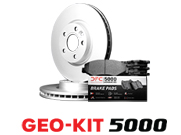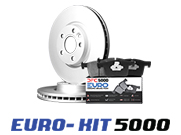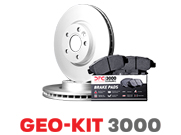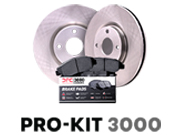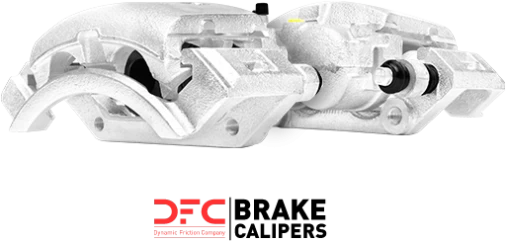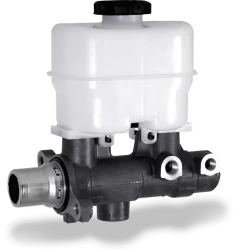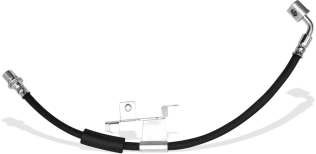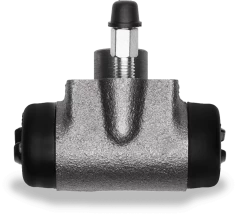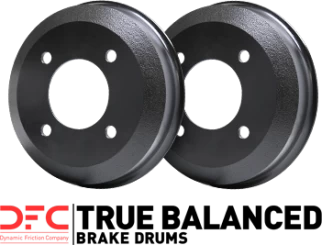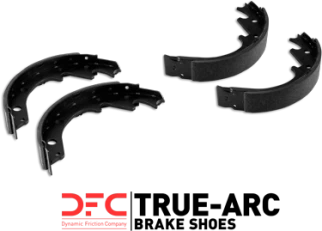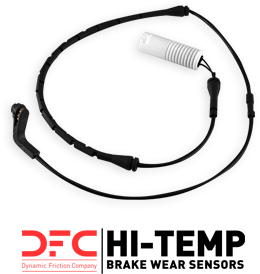
When it comes to vehicle safety, effective braking is non-negotiable. However, one of the most concerning issues drivers face is brake fade—a temporary reduction in braking performance caused by excessive heat, which affects the entire brake system. Whether you’re navigating steep descents, towing heavy loads, or dealing with high-performance driving conditions, brake fade can compromise safety.
At Dynamic Friction Company (DFC), we design our brake products to resist brake fade and maintain consistent, reliable performance under extreme conditions. Let’s dive into what brake fade is, why it occurs, and how DFC products offer a solution.
What Is Brake Fade?
Brake fade occurs when a vehicle’s braking system loses effectiveness due to heat buildup. This can happen in various scenarios, such as repeated heavy braking or extended downhill driving, where the friction materials in the pads and rotors overheat and lose their ability to generate the necessary stopping force. Heat buildup reduces braking power, leading to a significant reduction in braking performance and compromising safety.
Types of Brake Fade: Brake Fluid Fade
- Friction Fade: Overheated brake pads lose their ability to generate friction, reducing stopping power.
- Fluid Fade: Excessive heat causes the brake fluid to boil, creating vapor that reduces hydraulic pressure in the braking system. This phenomenon, known as brake fluid fade, occurs when the brake fluid becomes compressible due to boiling. Prolonged or heavy braking can lead to this condition, especially if moisture in the fluid lowers its boiling point, ultimately resulting in reduced braking power. It is recommended to flush the system to prevent or address brake fluid fade.
- Mechanical Fade: Components like rotors warp or degrade due to extreme heat, affecting the braking system’s mechanical integrity.
Causes and Symptoms of Brake Fade
Brake fade occurs when the braking system’s ability to stop the vehicle is reduced due to excessive heat buildup, worn-out brake pads, or brake fluid leaks. Recognizing the causes and symptoms of brake fade is crucial for maintaining vehicle safety.
- Excessive Heat Buildup: When brake pads and rotors overheat, they lose their ability to generate friction, leading to brake fade. This is common during repeated heavy braking or extended downhill driving.
- Worn-Out Brake Pads: As brake pads wear down, they become less effective at generating the necessary friction. This can cause the brake pedal to feel spongy or soft, reducing stopping power.
- Brake Fluid Leaks: Leaks in the brake fluid system can lead to a spongy brake pedal and decreased stopping power, as the hydraulic pressure needed for effective braking is compromised.
- Aggressive Driving: Quick stops and fast starts generate excessive heat in the braking system, increasing the risk of brake fade.
- High-Speed Driving: Driving at high speeds can cause significant heat buildup in the braking system, leading to reduced braking effectiveness.
- Heavy Vehicles: Trucks, buses, and other heavy vehicles are more prone to brake fade due to their increased weight and higher braking demands.
Why Brake Fade Is Dangerous
Brake fade reduces your ability to stop quickly, increasing the risk of accidents. Unlike brake fade, which is a temporary reduction in braking power due to heat, brake failure is a more severe issue caused by mechanical or hydraulic faults. It’s especially dangerous during high-stress situations like emergency braking or when traveling at high speeds.
Prevention and Maintenance
Preventing brake fade requires regular maintenance and mindful driving habits. Here are some effective strategies to keep your braking system in top condition:
- Regular Brake Pad Replacements: Ensure your brake pads are replaced regularly to maintain optimal friction and stopping power. Worn-out pads are less effective and more prone to overheating.
- Brake Fluid Checks: Regularly check brake fluid levels and condition to prevent leaks and ensure the hydraulic system functions properly. Using high-quality brake fluid with a higher boiling point can also help prevent fluid fade.
- Engine Braking: Utilize engine braking by downshifting to slow down, which reduces the load on the braking system and helps prevent brake fade.
- Lower Gear: When driving down steep hills, use a lower gear to control your speed and reduce reliance on the brakes, minimizing heat buildup.
- Avoid Aggressive Driving: Smooth, gradual stops and starts help prevent excessive heat buildup in the braking system, reducing the risk of brake fade.
How DFC Products Are Engineered to Prevent Brake Fade
At DFC, we focus on advanced materials, engineering, and design to combat the effects of heat buildup. Selecting the right brake pad material is crucial for preventing brake fade, especially under extreme conditions. Our products are specifically designed to maintain optimal performance under extreme conditions, giving you confidence and control when it matters most.
Key Features of DFC Products to Combat Brake Fade: Brake Pad Material
- Advanced Friction Materials: The DFC 5000 ADVANCED Brake Pads feature a specialized formulation designed to deliver consistent pedal feel and superb fade resistance. These pads ensure stable friction performance across a wide temperature range, making them ideal for daily driving and demanding conditions alike.
- Positive Mold Construction: Our brake pads are manufactured using positive mold construction, which ensures consistent friction material density for reliable performance. This method minimizes the risk of overheating.
- Scorching and Post-Curing: All DFC brake pads are 100% post-cured and scorched to eliminate uncured bonding agents, providing immediate stopping power and reducing the likelihood of fade during the initial break-in period.
- High Carbon Rotors: DFC’s GeoSpec Coated Brake Rotors are engineered with high carbon content, which improves heat dissipation and reduces the risk of warping, a common cause of mechanical fade. Disc brakes are more effective in dissipating heat and preventing brake fade compared to drum brakes, making them standard in most modern vehicles.
- Ventilation Design: Our rotors feature advanced ventilation patterns to enhance airflow, keeping temperatures low during heavy braking sessions.
- Premium Brake Fluid: Using high-quality brake fluid with a higher boiling point can prevent fluid fade. At DFC, we recommend pairing our pads and rotors with premium fluid for optimal results.
DFC Brake Pads vs. OEM Brake Pads
When it comes to choosing brake pads, DFC offers significant advantages over OEM options, particularly in terms of fade resistance and overall performance.
- Fade Resistance: DFC brake pads are engineered to provide superior fade resistance, even under extreme temperatures and demanding braking conditions. This ensures consistent performance and safety.
- Friction Material: DFC uses proprietary friction materials designed to deliver consistent braking performance and excellent fade resistance. These materials are formulated to handle a wide range of temperatures and driving conditions.
- Ceramic Materials: Many DFC brake pads incorporate ceramic materials, which offer improved durability and heat resistance compared to traditional materials. This results in longer-lasting pads and better performance under stress.
- OEM Compatibility: DFC brake pads are designed to be fully compatible with OEM brake systems, making them an ideal upgrade for drivers seeking enhanced braking performance without the need to replace their entire braking system.
Real-World Applications of Brake System
DFC products are designed for diverse applications, from daily driving to heavy-duty and performance use. Whether you’re managing the intense heat of a track day or navigating challenging terrain, DFC components provide the durability and fade resistance needed to perform in any condition.
Trust Dynamic Friction Company for Fade-Resistant Brake Performance
Brake fade can compromise safety and confidence on the road, but it’s preventable with the right components. At DFC, we are committed to delivering innovative solutions that combat brake fade and ensure your braking system performs at its best, even under the toughest conditions.
Upgrade to DFC products and experience the difference that quality and engineering excellence can make.

 UNITED STATES
UNITED STATES
